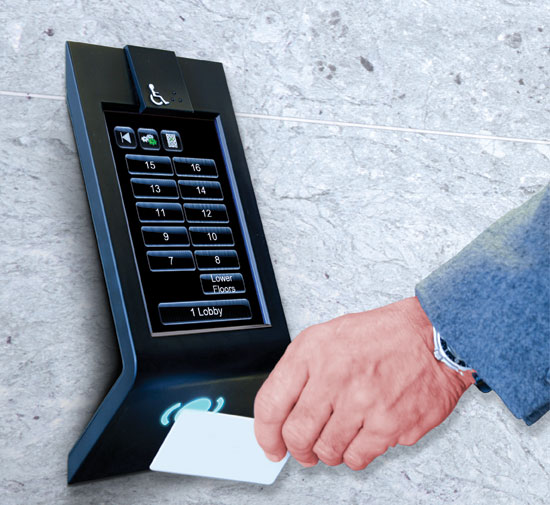Cutting-Edge Elevator Technology
Destination Dispatch
Being an amenity for building convenience, elevators are more than just vertical transportation. Its performance is a real factor in setting rental prices and attracting and retaining tenants for office buildings or buyers of condominiums. They are a memorable part of our visits to hotels and conventions. Although elevators are inherently energy efficient due to their counterbalancing, elevator systems do use significant energy during operation, and this can be bad for the triple bottom line of social, economic and environmental sustainability. Additionally, elevators consume floor area for each story served—square footage that can't be used for any other purpose.
With the goal of making elevators more efficient in each of these respects, designers are frequently looking to a computer-based system of destination control, a smart elevator technology often called destination dispatch.
The essence of destination dispatch is the premise that the user of a multi-elevator installation alerts the system to his or her intended destination before entering the car. This feature alone improves on the heuristic algorithms, by enabling the LGCS to group riders together who are traveling to the same destination. But the potential is great for destination dispatch to improve the building mobility experience—reaching beyond performance improvements alone.
User Experience
For example, user convenience and experience can be enhanced, making destination dispatch an amenity in its own right. It is less likely to strain the user's wait-time tolerance. Each input device is position knowledgeable, so devices can be placed throughout the path of travel to allow the user's walk time to the elevator to become part of the waiting time, for example. Some destination dispatch systems have the capacity for personalizing aspects of the ride to the individual user through use of RFID or pin code technology.
Building Performance
Performance improvements also benefit bottom-line property financials. Fewer trips and fewer stops can translate to reduced energy requirements, which translate directly to savings on power consumption and reduced carbon emissions. Destination dispatch systems can provide heightened security and access control. This is especially true for security programs and building automation system (BAS) devices engaged in data collection and analysis, which can provide a level of access control that elevators equipped with keyed access systems cannot.
Personalized for Occupants
Such personalizing dispatch systems are poised to significantly alter the elevator control paradigm over the next decade. Stored user data can also be shared with other BAS networks, creating opportunities for “smarter buildings” that demonstrate improved performance in myriad ways. This is true for new construction projects and existing systems in need of modernization, in both high-rise and mid-rise settings across a wide range of typologies.
 |
Elevator dispatch systems can be personalized to allow for a number of special functions, storing user data to allow for certain types of access, special elevator privileges, or for sharing with other BAS networks. Photo courtesy of Schindler Elevator Corporation |









